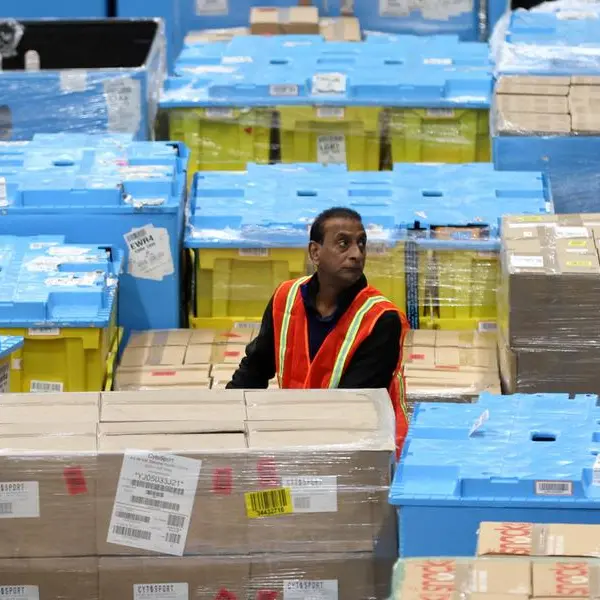PHOTO
(The opinions expressed here are those of the author, a columnist for Reuters.)
LITTLETON, Colorado - United States exporters of liquefied natural gas (LNG) are likely cheering the shutdown of the last coal-fired power plant in the United Kingdom, as the move locks in long-term gas demand by the world's sixth largest economy.
By closing the 2,000 megawatt (MW) coal plant in Nottinghamshire, Britain has become the first G7 country to end coal-fired power production and make significant progress against energy transition and pollution reduction targets.
But the move also elevates natural gas to the UK's most essential power fuel, and means the country will likely need to boost gas imports going forward even as power firms continue to roll out renewables and other forms of clean power output.
That's good news for LNG exporters in the U.S., which are the world's largest suppliers of the super-chilled fuel and are targeting growth into European markets which are quicker and cheaper to service than more distant buyers in Asia.
GAS DEFICIT
UK gas consumption has exceeded domestic gas production for the past 20 years, according to the 2024 Energy Institute Statistical Review of World Energy.
In 2023, the UK's gas shortfall was just over 29 billion cubic meters, which is equivalent to the annual gas output of Kazakhstan, which was the 24th largest gas producer globally last year.
Historically, the United Kingdom has relied on Norway to provide a majority of the UK's gas imports by pipeline, and around 41% of total UK gas imports came from Norway in 2023, according to UK government data.
However, pipeline capacity restrictions combined with a drive to improve UK energy security has spurred a steady rise in UK LNG imports over the past decade.
LNG imports allow power firms to increase the amount of gas that is stored within the UK, and can act as a hedge against the price and supply volatility stemming from heavy reliance on only a few pipeline suppliers.
Between 2018 and 2023, UK LNG imports jumped by 171% from 7.2 billion cubic meters (BCM) to 19.4 BCM, according to the Energy Institute.
That growth exceeded that of Europe as a whole over that period, and in volume terms placed the United Kingdom second only to France among LNG importers in Europe from 2018 through 2023.
US BOOM
This climb in UK LNG demand came at a perfect time for U.S. LNG exporters, who have been on a drive to diversify LNG sales beyond Asia.
Between 2008 and 2018, around 64% of U.S. LNG exports was shipped to Asian markets such as Japan, China and South Korea.
Those countries are considered long-term growth markets for natural gas, and so are natural targets for all LNG exporters.
However, U.S.-based sellers are at a severe competitive disadvantage compared to Australia and Qatar in serving Asian markets, due to longer journey times.
The trip from the U.S. East Coast to Southern China, for instance, can take 35 days, according to LSEG.
That is nearly 4 times longer than from Australia and twice the duration from Qatar, and means U.S. vessels are tied up for far longer on those routes compared to their competitors.
The freight economics flipped, however, on European routes.
The trip time from Cove Point on the U.S. East Coast to the U.K.'s Grain LNG import terminal is roughly 11 days.
That compares to nearly 20 days from Qatar and 30 days from Australia, and so means that U.S. LNG shippers can offer faster delivery schedules and lower freight costs than their peers.
And during 2022 and 2023 - when Europe's power markets were surging following Russia's invasion of Ukraine - many buyers were happy to pay top dollar for speedy and regular LNG supplies in order to avert power outages.
CAPTIVE
U.S. exporters took full advantage of the boom in European LNG import demand in 2022 and 2023, more than doubling shipments to the continent in 2022 to a record 52.5 million metric tons, and then raising sales volumes by an additional 8% in 2023.
So far in 2024, however, the pace of sales to Europe has contracted by 22%, dealing a blow to the short-haul service routes from the U.S., Kpler data shows.
Sales to the United Kingdom so far this year are down roughly 60%, and the lowest since 2021.
Thankfully for U.S. LNG sellers, a roughly 43% rise in LNG imports from Asia has offset the volume loss to Europe, and has pushed overall LNG exports to a new high so far this year.
However, the higher shipments to Asia have come at the cost of lengthier journeys and longer turnaround times before vessels can get reloaded.
Going forward, however, U.S. LNG exporters will be hoping for a rebound in UK LNG demand, which could help avert any power supply issues following the coal plant shut down, and fuel fresh growth in one of the most lucrative U.S. LNG trade routes.
(Reporting by Gavin Maguire; Editing by Michael Perry)























